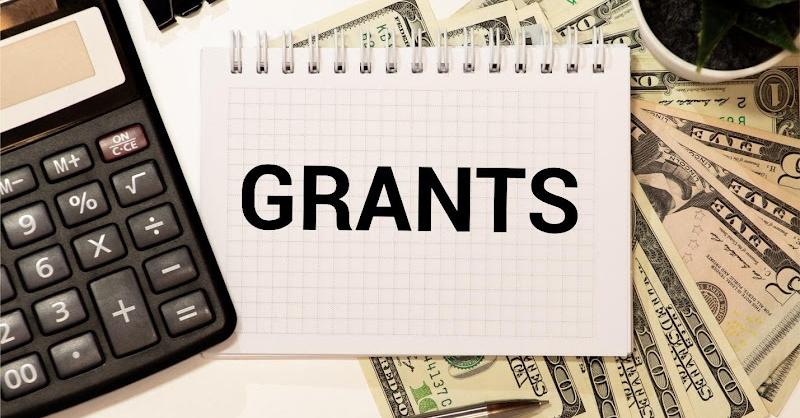Funds given to businesses by a government organization for a specific purpose are called business grants. These grants are available to business owners during the startup phase, for research and development, and for company expansion. Unlike loans or credit cards for businesses, these grants don’t need to be repaid. They don’t hurt your business credit score and you don’t have to worry about lender fees while getting your money. However, these grants do come with restrictions, you need to spend the money as outlined by the grant provider, or you could face serious penalties.
How to Write a Government Grant: Some Helpful Tips
Writing a government grant is an important way to help businesses grow better and here are some tips from Grantlist.
1. Use a Compelling Headline
You need to put down your proposal using words in a way that can help the government understand you better. A government grants title is just as crucial as putting down an engaging title to a blog post. Here are some pointers on making your headline stand out.
- Use action verbs.
- Be specific.
- Keep it short.
2. Use a Subheading to Add More Context
A compelling heading is going to draw government officials in, but an informative subheading is going to explain what you’re sharing with government officials. When you craft your subheading, ensure that you conclude your government grants in a sentence. Your subheading always needs to support the heading of your government grants in order to keep people reading.
3. Convey the Value of the News to the Press
If you want your government grants to be picked up by the media, your government officials need to be given a reason to care. Use the reverse pyramid formula for this one, and ensure that your government grants go from the most important information to the least important. Your first paragraph needs to cover the who, what, and where. Following that, your second paragraph will cover why. Reporters don’t have a lot of time to sift through details and irrelevant information. Reporters just need facts to help them tell your company’s story to government officials from a position of authority. A tip from us is to make sure you don’t add important information after the second paragraph because reporters and government officials are likely to miss it.
4. Use Tempting Quotes
Now, that setting the scene is over, you need to bring your details to life with a tempting quote that reporters can use as context for your government grants. A tempting quote helps you paint a picture of how your company’s news affects the industry and customer base. Ideally, you should use quotes from key stakeholders in your business. These key stakeholders can be your executive team, project leads, or members of your organization directly affected by the news.
5. Provide Valuable Background Information
In the last paragraph, you mostly wrap up your proposal and add some background information, since the government officials have the key details they need regarding your proposal. The last paragraph should be all about strengthening your narrative through some background details like how your company developed the project you are announcing. You can also comment on the future implications of your government grants. You can also use the newsjacking method to add extra value to your government grants. Newsjacking means equating your government grants to something important going on at the moment, it adds more value to reporters and government officials alike.
A Small List of Federal Grants A Business Can Avail
Shuttered Venue Operators Grant (SVOG)
The Shuttered Venue Operators Grant is a grant program specifically administered by the Small Business Administration. The grant provides emergency financial assistance to eligible shuttered venues that have been affected by the pandemic. Venues eligible for the small business relief program include live performing arts organization operators, live venue operators or promoters, and relevant zoos and aquariums.
Grants.gov
Grants.gov is an official access point for government grants for businesses. It has a comprehensive amount of information about the federal grant process. You can start your search for government grant opportunities and check “businesses” in the eligibility section. You’ll need to register an account first to read the full eligibility criteria for each grant and apply through Grants.gov.
Challenge.gov
Challenge.gov is a concise list of creative, scientific, and technical competitions and prizes run by agencies associated with the federal government in order to enhance innovation. You can use their homepage to search through various competitions. These competitions will contain a host agency, prize amount, and type of challenge. You may come across a competition that catches your eye, and you can simply register for an account and submit your entry for that competition.
Small Business Innovation Research Program (SBIR)
SBIR is a grant program with a competitive nature. It encourages US-based businesses to engage in research and development projects for federal agencies. It is an awards-based program made for high-tech innovation with the potential for commercialization. SBIR is under the US Government, specifically the Small Business Administration (SBA). To qualify, you need to operate a for-profit business with a workforce of less than 500 employees and fulfill other eligibility requirements as well. One notable example of the SBIR grant is the one run by the National Institute on Disability, Independent Living, and Rehabilitation Research (NIDILRR). They provide ten grants of up to $100,000 for research and development projects in the field of accessibility.
Conclusion
If you feel like feel like there’s no chance of your business getting a grant, we hope this blog could help you draft a proposal. There are lots of funding options for businesses like SBA loans and bank loans. If grants through the SBIR or STTR don’t work out for you but you want a grant instead of a loan, you can opt for other agencies and programs like the Department of Energy’s Small Business Innovation Research Program. One other program is the National Science Foundation’s Small Business Technology Transfer program.
